
The exhibition traced the journeys of eight artists whose work Jehangir Nicholson admired and pursued and whose practices have undergone significant changes over the years.: Anju Dodiya, Atul Dodiya, Baiju Parthan, Nalini Malani, Sudhir Patwardhan, Sunil Gawde, Vivan Sundaram and Zarina Hashmi.
The journey was highlighted through a work by each of these artists in the Nicholson Collection juxtaposed with a current work that conveyed their present concerns. In each case, the difference or distance between the work in the collection and the recent work marked the shift that the artist had made, the twists and turns in the paths she or he had explored.
Following the course of these artists, we discover that the journey can be as exciting as the destination.
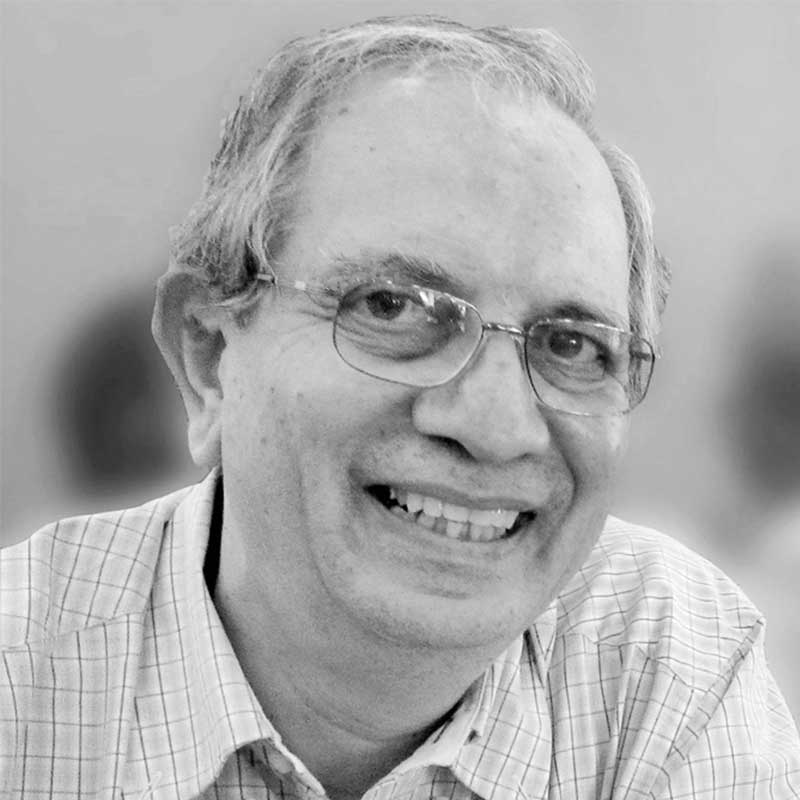
Sudhir Patwardhan was born in 1949 in Poona. He is a self taught artist and a practicing radiologist. He began painting seriously in the 70’s when he moved to Bombay. Patwardhan’s works centers around one poetically monumental panorama of an urban and natural environment The human figure remains the center of his painterly universe. His early paintings of construction workers, rickshaw drivers and railway porters possess an expressive urgency.
Patwardhan uses scale to maintain an emotional distance from his subject. Recording landscapes in transition has been a lasting interest for him. He often paints the suburbs, shanty towns and satellite townships where his subjects work and live.
Patwardhan’s canvases are densely populated reflecting the hub of city life often with emphasis on the ordinary, working man. His human forms are imbued with a sense of innate dignity as they go about performing their chores in busy city streets or in suburban construction sites.
Apart from several solo shows Patwardhan has participated in international exhibitions like ‘Aspects of Modern Indian Art’ Oxford, UK 1982; Contemporary Indian Art, Festival of India, London, 1982; Seven Indian Artists, Hamburg, West Germany, 1982; Contemporary Indian Art Festival of India, New York, 1985; Festival of India, Center George Pompidou, Paris 1986 and ‘Coupe de Coeur’ Geneva, 1987.
In 2004, a monograph on his work, ‘The Complicit Observer’ was written by Ranjit Hoskote. In 2007, Hoskote also wrote ‘The Crafting of Reality- Sudhir Patwardhan: Drawings’, which was translated into Marathi and a monograph in Marathi was published in 2012. Anjali Monteiro and K. P. Jaysankar have made a film on Sudhir. In 2012, the Mumbai theater group Awishkar staged a play ‘Chitragoshti’ based on Patwardhan’s paintings.
Patwardhan curated an exhibition of Indian Contemporary Art ‘Expanding Horizons’ which travelled around Maharashtra. He also curated a show at Guild Art Gallery, Mumbai and Sudarshan Art Gallery, Pune. He lives and works in Thane, Mumbai.
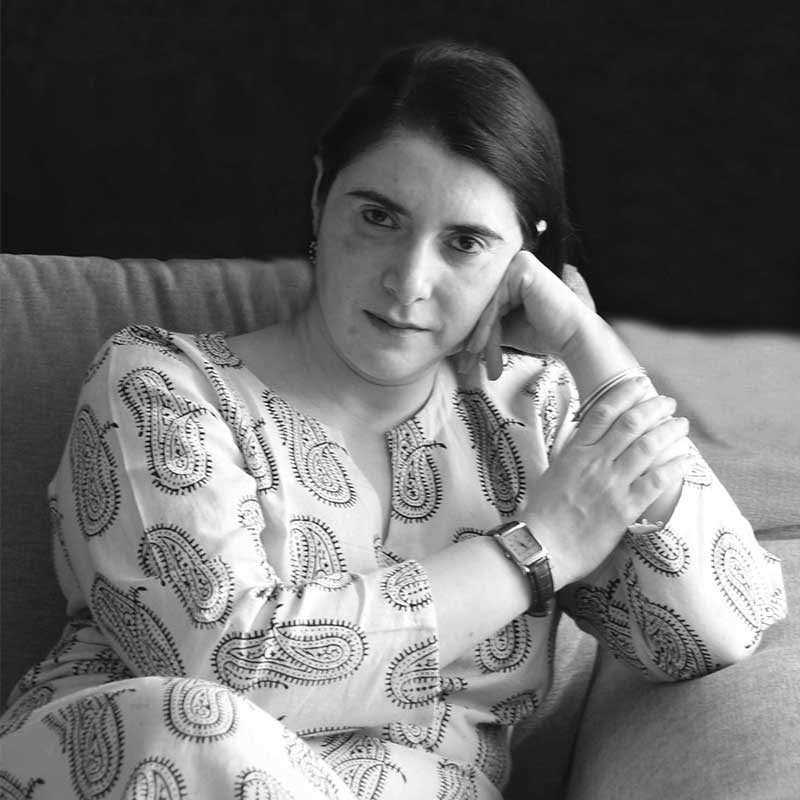
Anju Dodiya was born in Bombay in 1964. She graduated from the J.J. School of Art in 1986 with a BFA in Painting.
Dodiya’s early works were abstract, but following her first show, ‘A Fictional Autobiography,’ she tried to refocus her gaze on railway stations, roadside scenes and so forth. Ultimately, however, she found her original impulse of a painterly introspection as her strongest inspiration and re-channelled her vision into describing situations from her own life.
She creates expressive watercolours layered with images and symbolism. Rooted in the figurative, Dodiya draws inspiration from a range of artists including poet Sylvia Plath, filmmaker Ingmar Bergman, and early Renaissance masters Piero della Francesca and Giotto. Bold patterns and vivid colours of medieval French tapestries and Japanese woodblock prints also influence her works. Often autobiographical, her works reveal her interest in self-reflection and the process of self-discovery. Dodiya does this primarily through painting, however, has also created intricate installations involving embroidered mattresses and shards of broken mirror.
The majority of her works allow the viewer to visualise the private thoughts and moments which someone experiences when they are alone. Dodiya’s self is a recurring theme in each context. These are inward looking investigations with a keen sense of self-awareness. Her works compel the viewer to unravel stories of the female protagonists, yet they don’t reveal the full narrative. Dodiya also creates her own legends that are often self-disruptive autobiographies.
Dodiya’s works have been exhibited both in India and internationally, including the Frieze international art fair, Art Basel, and India Art Fair. She also has numerous works in private and public collections including the National Gallery of Modern Art, New Delhi; Chemould Prescott Road, Bombay; and the Art Institute of Chicago. Dodiya has also been the recipient of a number of awards such as the Zee Existence Award (2007); the Reliance India Art Exhibition Award for Harmony (1999); and she was nominated twice for the Sotheby’s Prize for Contemporary Art (1998, 2000). She lives and works in Bombay.
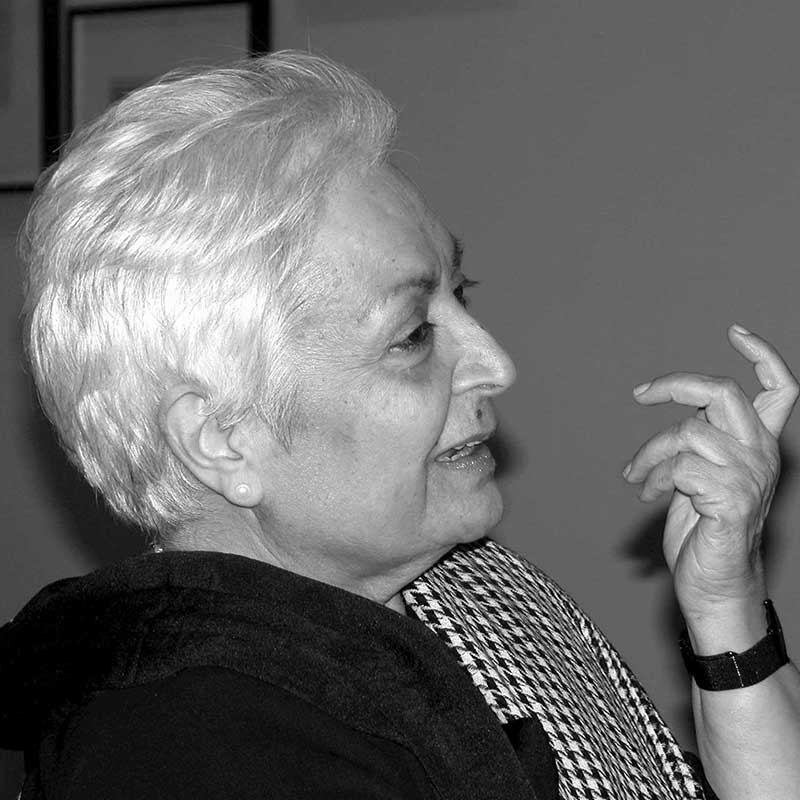
Zarina Hashmi (1937-2020) was an Indian-born, American artist. Born in Aligarh, British India, she received a mathematics degree from the Aligarh Muslim University in 1958. She then went on to study a variety of printmaking methods in Thailand; the Atélier 17 studio in Paris, where she was apprenticed to Stanley William Hayter; and with the printmaker Toshi Yoshido in Tokyo.
Her work encompasses a range of artistic practices including drawing, printmaking, and sculpture. Informed by her identity as an Muslim-Indian woman and extensive travel experiences Hashmi’s art explores the idea of home, distances, and trajectories. She drew elements from Islamic religious decoration, particularly the geometric shapes found in Islamic architecture. The abstraction and geometric style of her early works have been compared to minimalists such as Sol LeWitt.
During the 1980s, Hashmi was an active board member of the New York Feminist Art Institute as well as an instructor of papermaking workshops at the affiliated Women’s Center for Learning. Also, on the editorial board of the feminist art journal Heresies, she contributed to the publication’s issue, titled ‘Third World Women’.
Several pieces of her work are in the permanent art collections of the Museum of Modern Art, Whitney Museum of American Art, Victoria and Albert Museum, and the Bibliothèque Nationale de France. In 2011, Hashmi was one of four artists/artist-groups who represented India in its first entry at the Venice Biennale.
During her career, Hashmi’s held more than 40 solo exhibitions both in India and internationally. The first retrospective of her work was exhibited at The Hammer Museum in Los Angeles in 2012. It was entitled ‘Zarina: Paper Like Skin,’ and travelled to the Guggenheim Museum and the Art Institute of Chicago. Her work has also been shown at the Victoria and Albert Museum, London; the Museum of Modern Art, New York; Kunika Art Gallery, New Delhi; CSMVS Museum, Bombay; Bronx Museum of the Arts, New York; and Gallery Lux, San Francisco. She passed away in London in 2020.
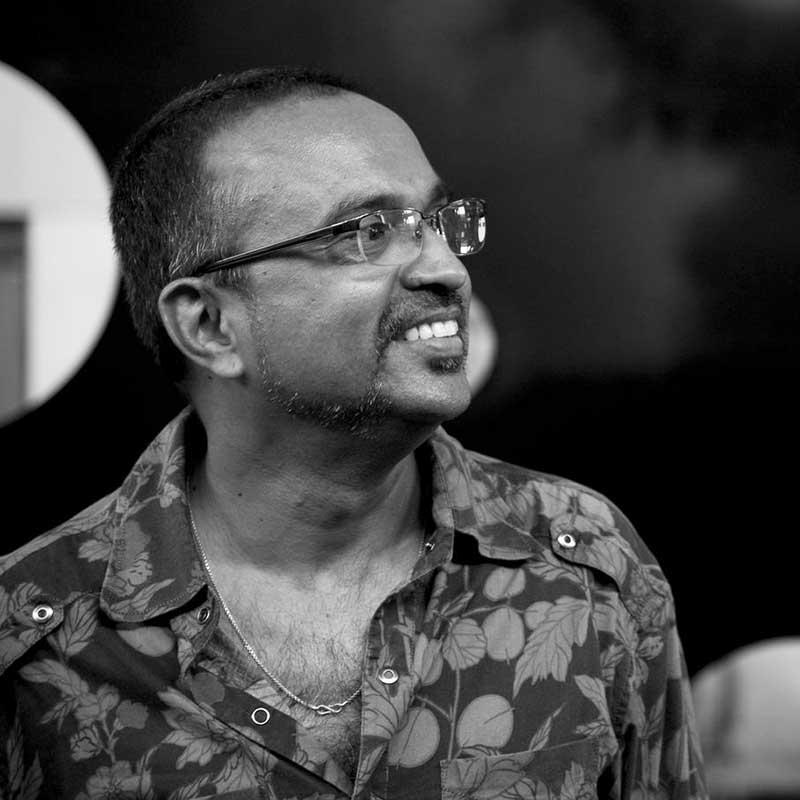
Sunil Gawde is a contemporary artist based in Mumbai. Born in 1960, he graduated from the J.J. School of Art in 1980. Despite his art education, Gawde chose to take a job at the Bombay Port Trust, where he worked until 1995. Through his tenure at the Port Trust, he remained alive to his surroundings, incorporating Bombay’s dockyards and wharves into his paintings. The peeling layers of paint on a ship’s helm, for instance, echoed his own philosophy of the canvas as palimpsest: “That is the logic of my paintings,” said Gawde, “to strip the overlayers partially, so that earlier histories may be revealed.”
Like his city he too is in a constant flow of transformation. Rooted in the tradition of being contemporary that is the leit motif of the city he brings an amalgam of unusual perspective married to a high degree of aesthetic sensibility. A multilayered philosophic underpinning to his output leavened by wit.
His important solo shows include Sour Amrosia at Gallerie Rabouan Moussion, Paris, ‘Swirling Blades’, ARKS Gallery London; ‘Radium Grass’, Macintosh Museum, Glasgow; ‘Oblique’ at Mumbai, Baroda, Chennai and New Delhi, ‘1mm’, Mumbai; ‘8 seconds ahead of time’, Bangalore.
His artistic life history includes important way stops at the 53rd Venice Biennale with the two ton kinetic piece ‘Alliteration’ in the Arsenal ‘Making Worlds’ at the 53rd Venice Biennale, was curated by Daniel Birnbaum in 2009; this art work was also re-exhibited at Kunstmuseum Bochum, Germany in an exhibition titled ‘Sparsha’ curated by Thomas Hensolt in 2014; the razor blade garland ‘Virtually Untouchable’ for ‘Paris-Delhi-Bombay..’ curated by Sophie Duplaix and Fabrice Bousteau, Centre Pompidou, Paris, France in 2011; the 12 foot stainless steel pendulum ‘Vicious Circle’ for the event ‘Finding India’ MOCA (Museum of Contemporary Art), Taipei, Taiwan 2010; the famous gigantic ‘Blind Bulbs’, dominating Jumeira Beach for the special project ‘Gulf Art Fair’ in 2007.
Sunil believes that travelling with the moment, connecting with the moment, keeps you relevantly vibrantly alive. He lives and works in Mumbai.
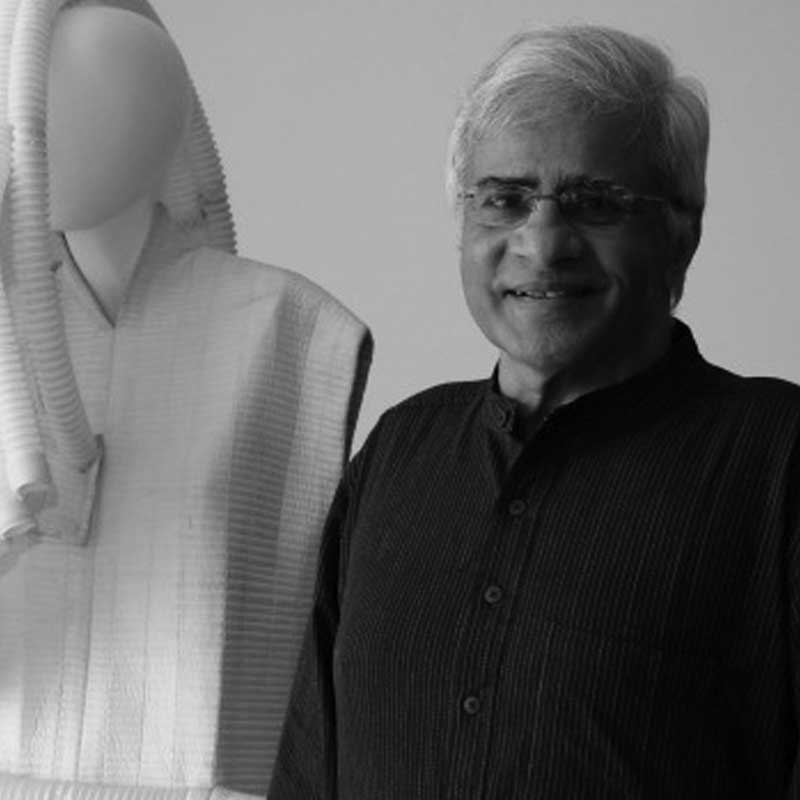
Vivan Sundaram was born in 1943. He graduated from the Faculty of Fine Arts in Baroda and the Slade School of Fine Arts in London in the 1970’s on a commonwealth scholarship. Sundaram is an artist who has been consistent in his pursuit of politically honed art.
Vivan is a key figure in Indian contemporary art who has moved away from the enterprise of easel painting into the realm of versatile mediums over the last decade. Sundaram’s style followed the narrative tradition till the late 80’s. In 1991, he responded to the Gulf War by breaking out of the two dimensional canvas and moving towards a conceptually oriented practice by experimenting with unconventional materials such as handmade paper stained with engine oil and charcoal. The Jehangir Nicholson Collection boasts of a work titled ‘Eclipse’ using similar mediums where a small drawing of Saddam Hussein can be found amongst the catastrophical illustrations of the war.
In 1972, Sundaram organised a retrospective for his cousin- renowned artist Amrita Sher-Gill and edited an anthology of her work. He was also an active participant in the artists protest movement about which he created a single channel video titled, ‘To Draw a Line’ in 2007. Several hands came together to create the site specific installation at M. S. University, Baroda where elements like notions of erasure, of trace, of collaboration and of performance become significant.The performance survives as a creative video document. This video was exhibited at ‘The Journey is the Destination: The Artists Journey between Then and Now’ at The Jehangir Nicholson Gallery, CSMVS in 2016, which traced the journeys of eight artists that were part of the Jehangir Nichoslon Collection.
Recently, in 2017 Sundaram supported by the Vadhera Art Gallery presented a monumental installation titled ‘Meanings of Failed Action, Insurrection 1946’ at the Coomaraswamy Hall, CSMVS. It featured a large steel and aluminium container with the capacity of 40 people seating at a time. It played a sound work that merged archival and contemporary recordings. This brought about a little remembered event that becomes a catalyst for developing interventionalist strategies.
Several of his recent projects involving the use of photographs, found objects, video and three-dimensional constructs in a variety of materials are expressly collaborative. His role here becomes that of an arranger, a conductor, a curator that probes identities in the contemporary international context.Some of his recent exhibitions have had the appearance of meticulously presented mini-museums, each one geared to the expression of a set of conceptual meanings that are coded into every detail of the organized space.
Vivan Sundaram lives and works in New Delhi, where he is a visiting professor at the Jamia Milia Islamia University.
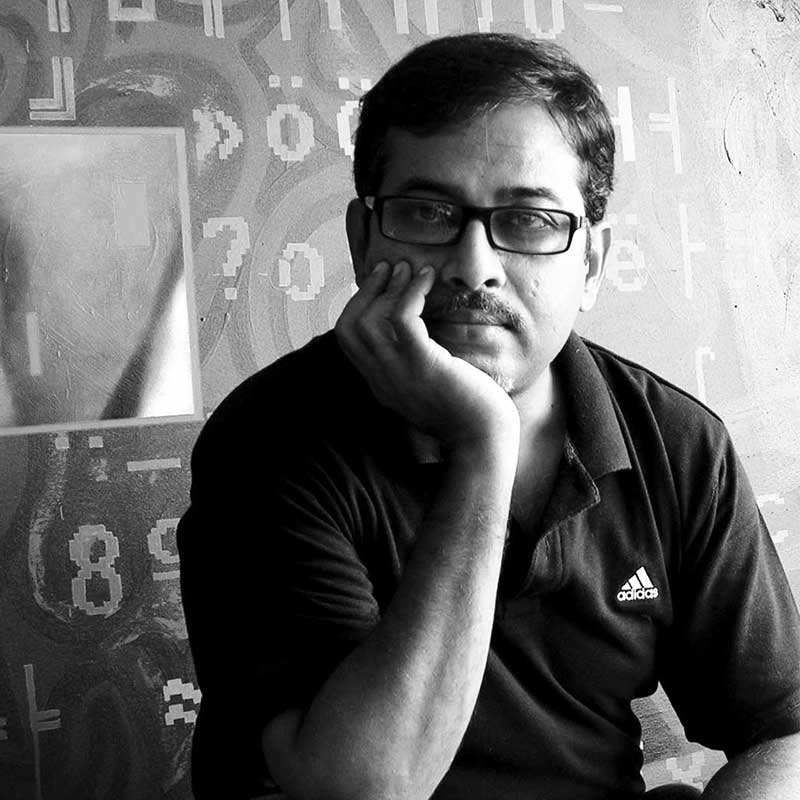
Baiju Parthan was born in 1956 in Bombay. He is a contemporary artist known for his intermedia worlds. While elaborating the workings of a mysterious inner universe through his paintings, Parthan has combined his painterly concerns with his explorations of cyberspace to produce a series of provocative, richly textured installations. Inspired greatly by philosophy, Parthan’s works focus on the understanding of the self as perceived in the western and eastern ways of thinking. His belief is that how one creates art, is defined by the way one’s sense of self is shaped. He aims to generate original metaphors and symbols that have the potential to expand the range of meanings that we can wrestle out of life and reality.
Through his work, Parthan strives to push the boundaries of the sense of self, and one’s position and role in society. Initially consisting of paintings on canvas, Parthan’s work has shifted to consist of a wide variety of materials, including newspapers, television, internet, large scale lenticular prints on metallic surfaces, and ancient cosmological diagrams, scientific charts, and satellite maps. This range of media allows Parthan to address the notion of blurring boundaries in modern life.
Parthan has exhibited widely in India and internationally and has received numerous awards including the Goa Lalit Kala Akademi Award in 1981 and the Lalit Kala Akademi Merit Prize from 1978 to 1981. He lives and works in Bombay.
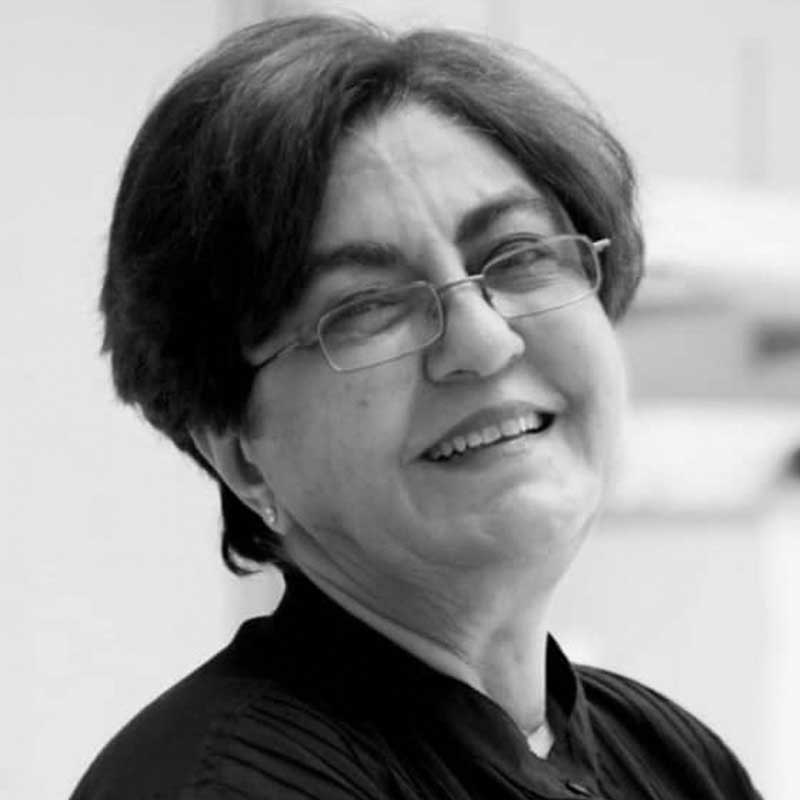
Born in 1946 in Karachi, undivided India, Nalini Malani is a pioneering artist renowned for her innovative integration of drawing, painting, theatre, digital media, and film. As an infant, the Partition of India forced her family to immigrate to Calcutta, and a few years later, Bombay. This shift would later influence her work and career as an artist.
Malani graduated with a diploma in Fine Arts from the J.J. School of Art, in 1969, and in 1970, received a French scholarship to study Fine Arts in Paris. In 1984, she was granted an art fellowship from the Government of India. While studying at the J.J. School of Art, Malani secured a studio at the Bhulabhai Memorial Institute between 1964 and 1967 – a hub for artists, theatre groups, dancers, and musicians. There, she became acquainted with a number of established artists, including V.S. Gaitonde, Tyeb Mehta, M.F. Husain, and Nasreen Mohamedi. At the Institute, she was able to explore interdisciplinary ideas and aesthetics which were not embraced by the traditional academism of the J.J. School of Art.
Awarded a scholarship from the French Government in 1970, Malani studied in Paris for two years, where she developed not only her photographic and film skills (at the Cinémathèque française), but also her political perspective. She frequented the Sorbonne, where she heard the lectures of inspirational thinkers like Jean-Paul Sartre, Simone de Beauvoir, and Noam Chomsky. However, when her grant ended, Malani decided to return to India as she wanted to contribute to the culture of the young nation.
Malani belongs to a league of thinkers who marked a departure from Western modernist ideals that prioritised style and universality in art and moved towards subjects that could reflect the socio-political realities of post-Independence India. Her commitment to social activism comes through in her art, making much of her work consciously political. Influenced by her experiences as a refugee of the Partition of India, Malani places inherited iconographies and cultural stereotypes under pressure. Her point of view is unwaveringly urban and international, and unsparing in its condemnation of a cynical nationalism which exploits the beliefs of the masses.
Her works elicit a fluidity of form: she morphs, smears, erases, animates, and overlays imagery. There is a state of flux, of becoming, that dishevels set characterisations. Malani’s practice features figures from daily life, history, mythology, literature, and art, which bear witness to and urge a reconsideration of societal roles and representations of women. In over six decades of her career, Malani’s rigour of experimentation with new mediums and techniques has enabled her to continually reinvent her visual language. Whilst her earlier pieces are expressionist, her works during the 1970s take on an increasingly narrative perspective. Throughout the 1980s, Malani’s artistic evolution results in her works becoming more multi-layered and fragmented, as they embrace issues such as poverty, hunger, and homelessness. From the 1990s, she began combining painting techniques with performance, video, and cinematic elements.
Malani has shown her works in over thirty museum solo exhibitions including The National Gallery, London; Centre Pompidou, Paris; M+, Hong Kong; KNMA, New Delhi; New Museum, New York; and Stedelijk Museum, Amsterdam. Recently, she has also exhibited at The Jehangir Nicholson Art Foundation in a show called, ‘The Fragility of Time.’ Malani has received several international awards for her work including an Honorary Doctorate in Fine Arts from the San Francisco Art Institute (2010); the Fukuoka Arts and Culture Prize (2013); The St. Moritz Art Masters Lifetime Achievement Award (2014); the Joan Miró Prize (2019); and most recently the Kyoto Prize in Arts and Philosophy (2023). She lives and works in Bombay.